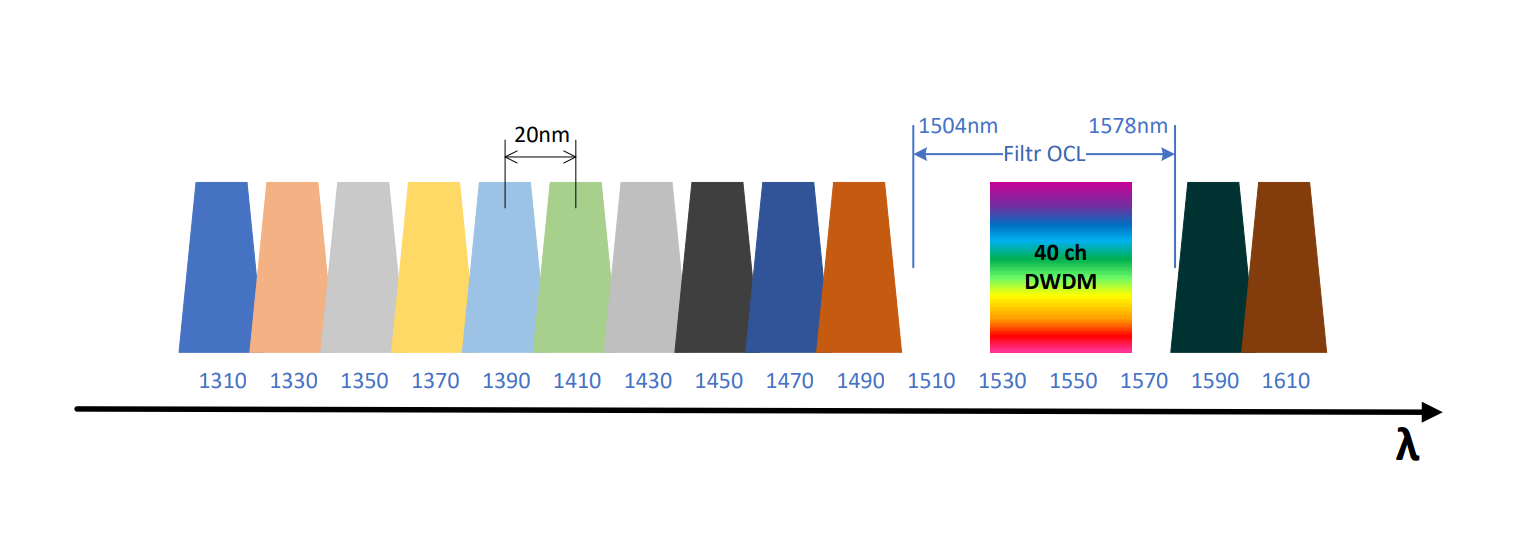What are the benefits of running DWDM after CWDM?
15 April 2024
#FCAteam

Big Data analytics is playing an increasingly important role in many sectors, including: telecommunications, banking, energy, and public sector. This has to do with the advancing technology of artificial intelligence and machine learning.
The main task of Big Data is to facilitate the understanding of phenomena occurring in telecommunications networks, or to predict customer behavior based on historical data. No wonder, then, that the importance of this issue in the market is growing – more and more companies want to implement modern applications of high computing power and information technology.
However, this type of activity comes with major challenges – the deployment of the aforementioned applications, due to the weight and size of the data they transmit, impose requirements on networks for wide bandwidth and reliable connectivity.
Let’s take a look at the following Case Study about how a bank network administrator deployed Big Data technology applications using existing fiber resources in the network.
Problem: Increasing number of applications and data transferred with limited bandwidth capacity
This was the challenge faced by one of our clients in the banking sector. He had already embarked on the path of digital transformation many years earlier, hence he had a CWDM system already implemented. This system was built on the basis of multiplexers with a so-called OCL port. The OCL port is a wide 1550 nm window (1504-1578nm) covering DWDM wavelengths from the entire C-band.
The problem, however, was that the customer’s network, in its basic form, proved to be inadequate with the emergence of new technologies such as, for example, Big Data.
He needed to increase the bandwidth of existing 10GbE and 8GFC channels to 100GbE and 32GFC, respectively. The availability of CWDM inserts for higher bandwidths is severely limited in terms of wavelength selection and very short transmission distances.
Solution: DWDM deployment
DWDM on the aforementioned OCL port is a method that makes it possible to run DWDM transmissions and enjoy all the benefits of this technology, while completely not interfering with previously used CWDM transmissions.
Using DWDM, we can transmit up to 96 200Gbps channels, and depending on the system (metro or longhaul) reach ranges of up to several hundred or several thousand kilometers. The possible speeds are equally impressive – by increasing the width of a single channel beyond the traditional 50GHz, it is possible to put together a transmission of 800 Gbit/s and more.
DWDM is a solution dedicated to companies that transmit huge amounts of data on a daily basis, and CWDM is proving to be insufficient for them.
So what was the purpose of launching DWDM after CWDM?
- Increasing the ability to transmit and process the growing amount of data associated with the launch of new applications working with Big Data
- Enabling the customer to launch data transmission at much higher speeds
- Preparing the infrastructure for further development – expansion of the network, without the need for costly upgrades in the future
Actions: what steps did we take?
The implementation of new technology at the client, required appropriate measures:
- Updating the collected data on the customer’s infrastructure to prepare the technical offer accordingly.
- Preparing several variants of the offer for the Client, in order to optimize technical solutions and visualize the cost of the system corresponding to its current and future needs.
- Creating a set of good practices and guidelines to facilitate the implementation and maintenance of the system.
- Technical support for the customer during cooperation – after-sales service.
- Verification of the correct operation of the system.
The effects? Take a look for yourself!
- 4 Tbit/s of increased capacity
- 52 channels – an increase from 12
- 25,000 savings relative to the construction of a new cable in the existing duct for a distance of 15km, on which 100G and FC32G transmission would be put together on separate pairs of fiber
And this is what the spectrum looked like in the network after the implementation of DWDM technology:


Are you interested in this solution?
Contact us!
